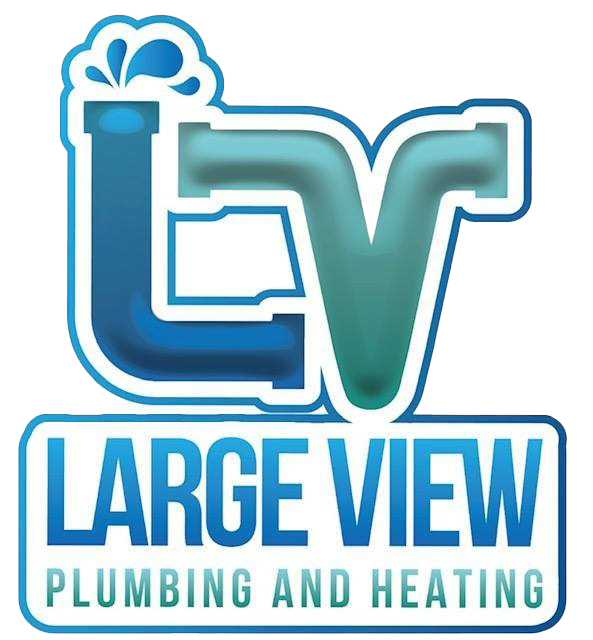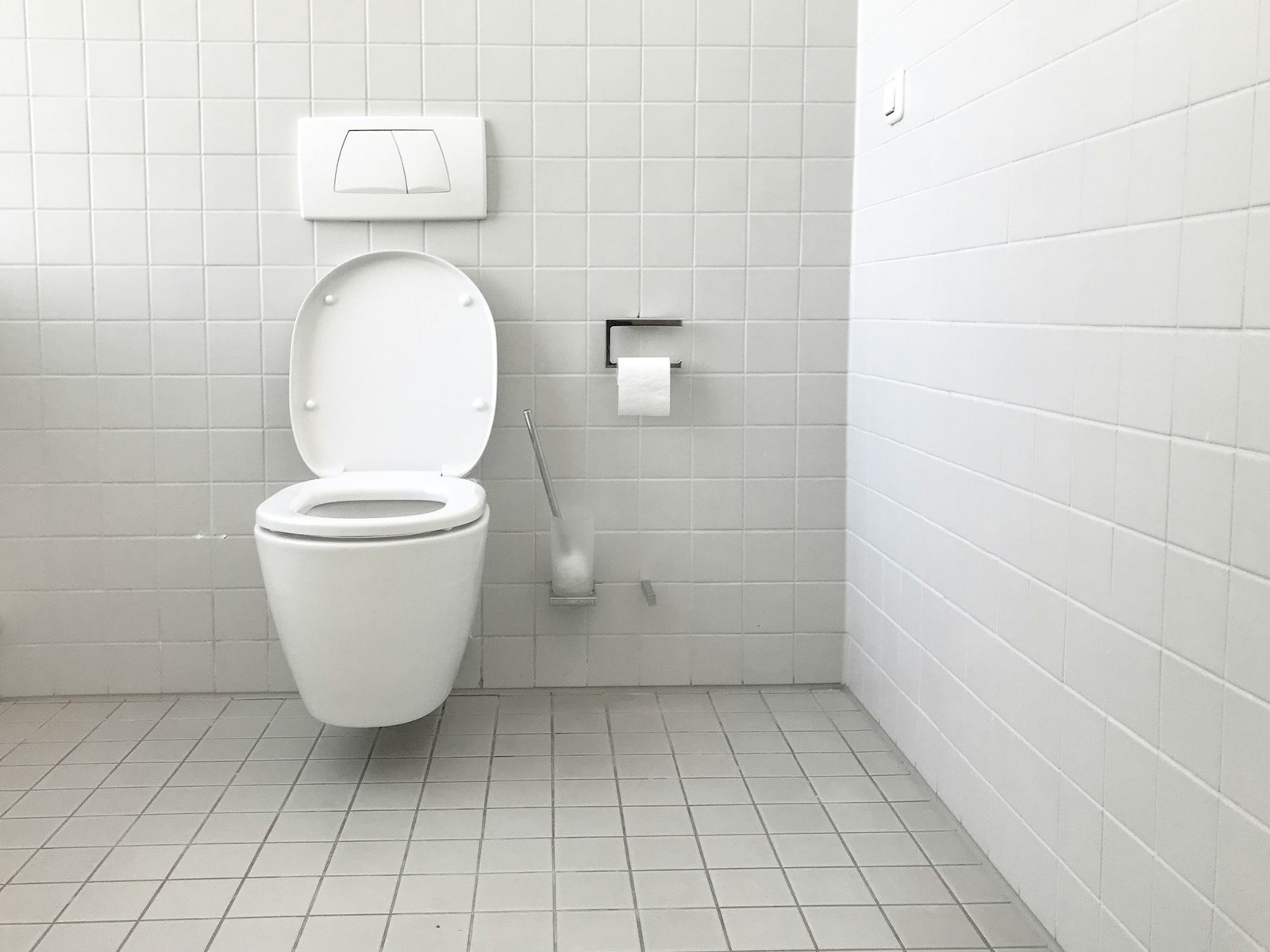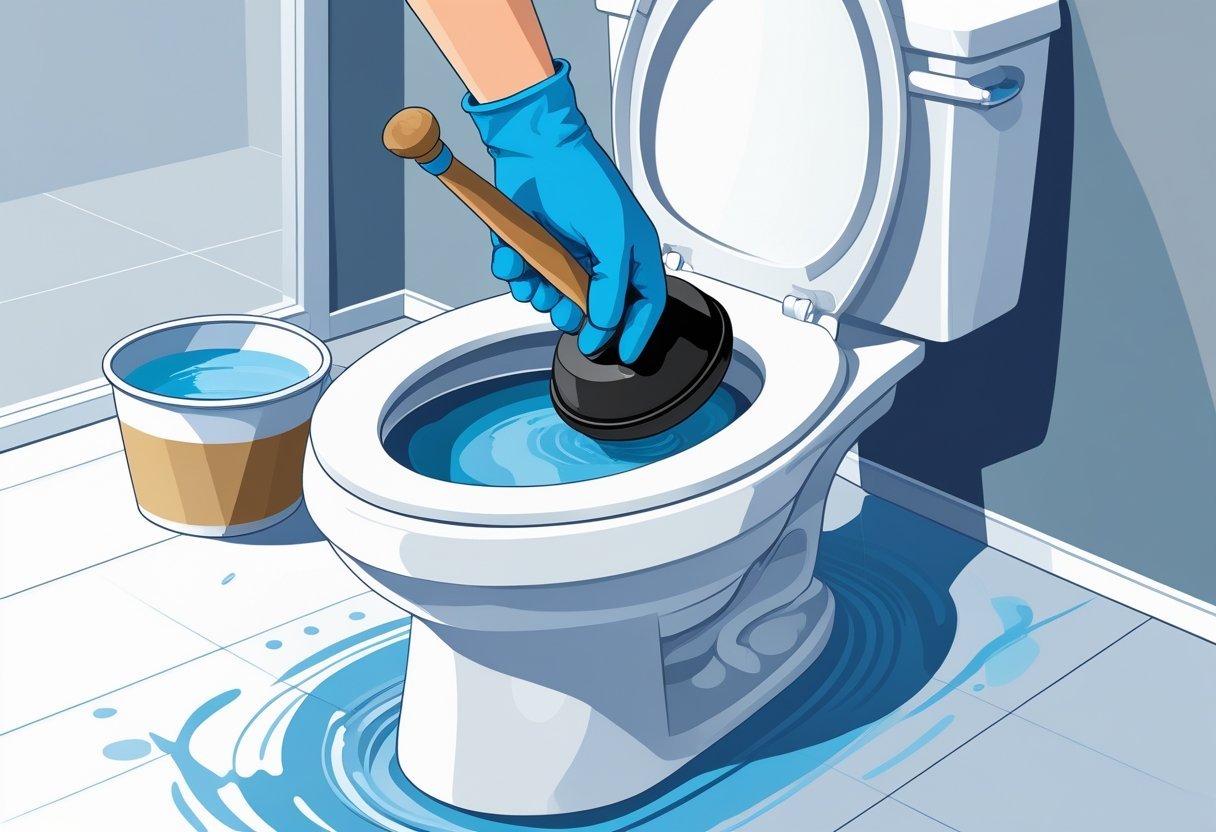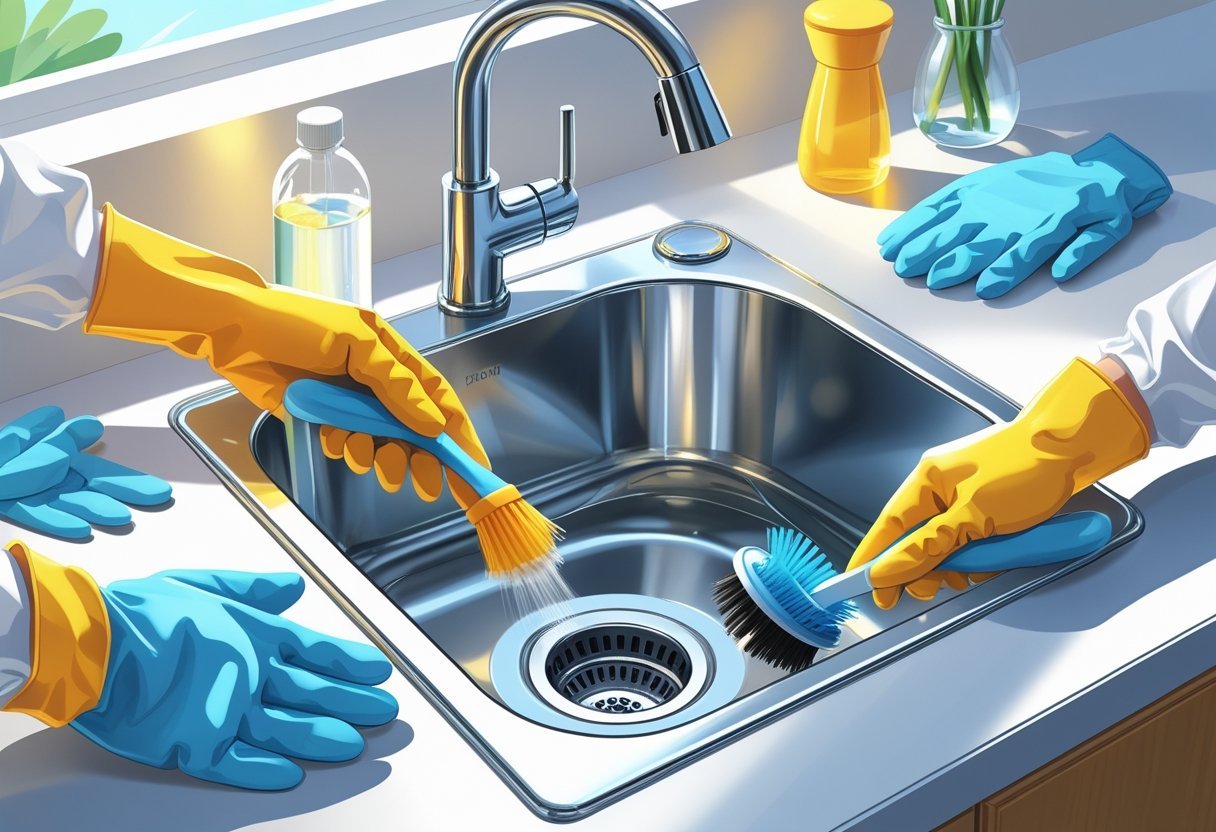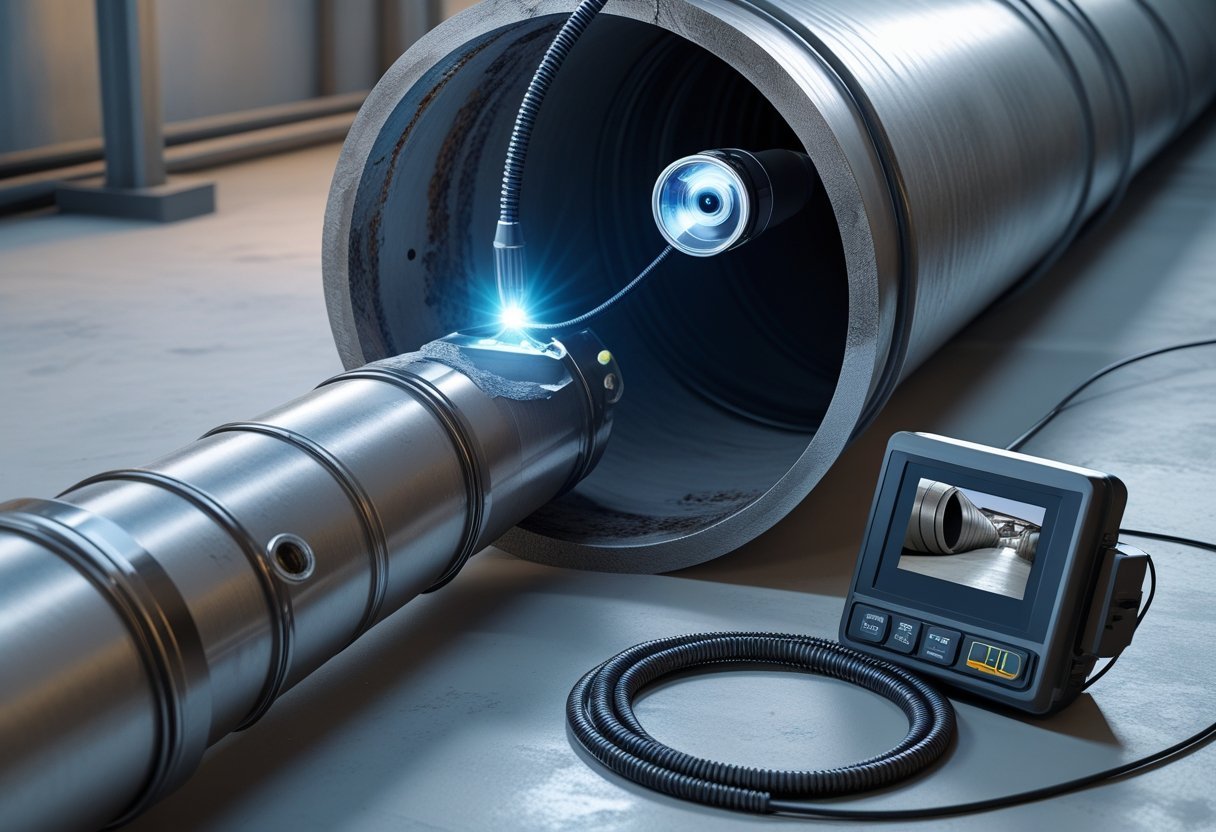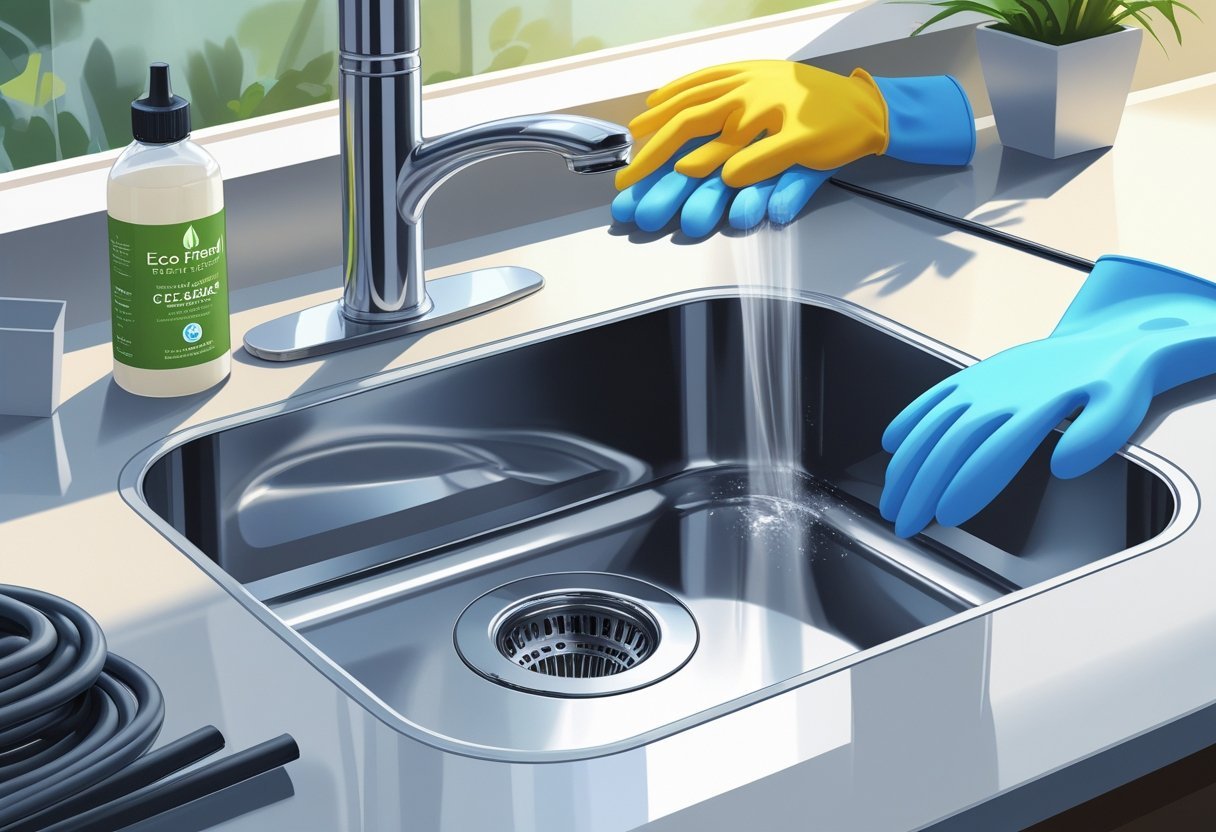As a homeowner, understanding the condition of your sewer lines is crucial for maintaining your property. Sewer camera inspections offer a precise and non-invasive method to identify blockages, leaks, and structural issues within your pipes. This technology allows professionals to visualize the interior of sewer lines, providing valuable insights that traditional inspection methods cannot offer.
When you choose to work with a company like Large View Plumbing & Heating, you gain access to expert technicians trained in the latest inspection techniques. Their commitment to quality service ensures that you receive a thorough evaluation, enabling you to address potential problems before they escalate into costly repairs. With over 10 years of experience, their team is dedicated to exceeding your expectations in every project.
Investing in a sewer camera inspection not only saves you time and money but also enhances the longevity of your plumbing infrastructure. With reliable insights into your sewer system’s health, you can make informed decisions about necessary repairs or maintenance. Trust Large View Plumbing & Heating to provide the clarity and reassurance you need for your plumbing concerns.
What Are Sewer Camera Inspections?
Sewer camera inspections are advanced techniques used to assess the condition of sewer lines and plumbing systems. This method utilizes specialized equipment to provide clear visual insights into your pipes, helping to identify issues like blockages, damage, or deterioration. Below are the key components of sewer camera inspections.
How Sewer Cameras Work
Sewer cameras consist of a flexible cable equipped with a high-resolution camera. This camera is inserted into the sewer line through existing access points. As it navigates the pipeline, it transmits real-time video footage to a color monitor above ground. This allows a technician to visually inspect the interior of pipes and diagnose problems effectively.
The camera can rotate and capture images in various angles, providing a comprehensive view of the pipeline’s condition. With the help of this technology, issues such as tree root intrusion, cracks, or grease buildup become easily identifiable.
Types of Inspection Cameras
There are several types of inspection cameras suited for different situations. The most common include:
- Standard Sewer Cameras: Used for general pipeline inspections, these cameras are great for visualizing larger sections of the sewer line.
- Crawler Cameras: Equipped with tracks, these cameras can traverse longer stretches of pipe, even navigating bends and turns.
- Pipeline Inspection Robots: These advanced units can access hard-to-reach areas, offering superior mobility and high-definition video.
Each type offers unique advantages depending on the specific requirements of your sewer system. Choosing the right camera can enhance the accuracy and efficiency of the inspection process.
Benefits of Video Inspection
Video inspection provides numerous advantages for homeowners. Firstly, it is non-invasive, which means no digging or disruption is required to conduct the assessment. This method is also efficient, allowing for quick identification of problems and significantly reducing downtime and repair costs.
A visual inspection camera can assist in documenting the condition of your plumbing system, which is helpful for future reference. Furthermore, identifying issues early can prevent more extensive damage. Companies like Large View Plumbing & Heating utilize video inspection techniques to provide reliable assessments and develop appropriate solutions for your plumbing needs.
Key Components and Features of Sewer Camera Systems
When selecting a sewer camera system, understanding its key components and features is essential for effective inspections. It is crucial to focus on the quality of the camera head, the display technology, mobility options, and the durability of materials used in the system.
Camera Head and Image Quality
The camera head is arguably the most critical component of a sewer camera. Look for high-resolution cameras that provide clear, detailed images. The image quality ensures that you can identify issues like cracks, blockages, or tree root intrusions accurately.
Camera heads often come equipped with adjustable LED lights for enhanced visibility in dark pipes. Consider models with self-leveling technology that maintain an upright position, giving you the best view regardless of the camera’s orientation.
If you’re working with various pipe sizes, make sure the camera head’s diameter is suitable for the range of pipes you inspect. This versatility is essential for thorough inspections, especially in older plumbing systems.
TFT Color Monitor and Display Technology
A TFT color monitor enhances your inspection experience by providing clear, vibrant images. The display should offer high resolution to ensure you’re not missing any critical details. Look for screens that are at least 7 inches in size to give you ample viewing area during inspections.
Some monitors come with built-in recording features, allowing you to capture footage for future reference or customer reports. It’s vital for installation and repair documentation.
Consider the adaptability of the monitor; it should be easy to mount on different surfaces or be portable for handheld use. Anti-slide mats can help stabilize the monitor during operation, preventing any movement while you observe the feed.
Connection Cables and Mobility
Connection cables are essential for linking the camera head to the monitor and should be of sufficient length. Opt for cables that are both durable and flexible to navigate complex piping systems.
Additional features like reel storage make transporting cables easier, preventing tangles and damage. Check if the system allows for a wireless option, enhancing mobility further. This flexibility can be invaluable in tight spaces or when accessing hard-to-reach areas.
Also, ensure the connection ports are weatherproof, especially if the camera setup will often be used in wet conditions. Large View Plumbing & Heating understands the importance of reliable connections for uninterrupted inspections.
Waterproofing and Build Materials
A quality sewer camera system must be robust and waterproof, as it will frequently be used in damp environments. Look for models constructed from high-grade materials like stainless steel or heavy-duty plastics that resist wear and tear.
Plastic domes over the camera can protect it from debris and water while also enhancing visibility. Be certain that the seals on the device are tested for waterproofing to prevent damage during use.
Durability extends beyond just waterproofing; consider other features like shock resistance and the overall weight of the system. Lightweight designs are easier to handle and maneuver, especially in complex plumbing conditions.
When you’re in need of reliable service, Large View Plumbing & Heating is dedicated to exceeding your expectations with over 10 years of expertise in the field.
Common Problems Detected by Sewer Camera Inspections
Sewer camera inspections are essential tools for identifying issues within your plumbing system. These advanced inspections can reveal various problems, from simple clogs to severe structural damage, allowing for timely interventions.
Clogs and Blockages
Clogs are one of the most common issues detected during a sewer camera inspection. They can occur due to the accumulation of insoluble materials such as grease, soap, and food particles. This build-up can lead to stoppages that disrupt your plumbing.
Using a camera, professionals can locate the exact position of the blockage. This allows for targeted clearing methods to be applied, rather than invasive techniques that may damage your pipes. If you notice slow drainage or recurring backups, a sewer camera inspection may be necessary.
Root Intrusions in Sewer Lines
Tree root intrusions represent another significant issue detected by sewer camera inspections. Roots from nearby trees can infiltrate your sewer lines, creating blockages and even damaging the pipelines. This intrusion often starts with small cracks or joints.
The camera can provide a clear image of the extent of root growth within the pipes. If detected early, remedies such as chemical root treatments or pipe replacement can be applied. It’s critical to address root intrusions promptly to prevent serious damage to your sewer line.
Pipe Damage and Structural Issues
Pipe damage can take several forms, including cracks, collapses, or severe corrosion. These structural issues can cause leaks, leading to costly water damage and health hazards. A sewer camera inspection helps to identify these damages before they result in extensive repairs.
Professional teams, such as Large View Plumbing & Heating, utilize camera technology to assess the condition of your pipes. They can determine whether pipe rehabilitation or replacement is necessary. Early detection through these inspections minimizes the risk of future plumbing emergencies, ensuring your sewer system functions optimally.
Applications and Uses for Property Owners and Professionals
Sewer camera inspections serve a vital role for property owners and professionals alike. They provide essential insights into the condition of sewer lines and plumbing systems, allowing for proactive maintenance and effective repairs. Below are specific applications relevant to both residential and commercial settings.
Residential Sewer Line Maintenance
For homeowners, regular sewer line inspections are critical to maintaining the health of your plumbing system. A camera inspection can pinpoint blockages, cracks, or signs of root intrusion, ensuring that small problems do not escalate into costly repairs.
Using a camera allows you to visualize the interior of your pipes without invasive digging. This method saves time and protects your yard. Regular checkups can help prolong the life of your sewer line, giving you peace of mind. If you experience recurring drainage issues, scheduling an inspection with a reliable plumbing company like Large View Plumbing & Heating ensures that any underlying problems are promptly addressed.
Commercial Plumbing and Drain Cleaning
In commercial settings, the stakes are typically higher, emphasizing the need for regular sewer line inspections. Businesses cannot afford disruptions caused by plumbing failures. Camera inspections help you maintain efficient operations by identifying issues early before they lead to significant downtime.
For restaurants, offices, or retail spaces, clear and properly functioning drains are essential. Inspections allow for thorough assessments, enabling timely maintenance or emergency repairs. Establishing a routine schedule with professionals can enhance your plumbing reliability, ensuring that your business runs smoothly.
Pipeline Inspections for Real Estate Transactions
When purchasing or selling property, sewer camera inspections provide valuable information regarding the plumbing system’s condition. A comprehensive inspection can identify potential issues that might affect the property’s value. This information can be a key negotiating tool during real estate transactions.
Having this insight protects you from unexpected repair costs after moving in. Working with experienced professionals can guide you through assessments, ensuring you understand any risks associated with the property. Large View Plumbing & Heating can offer expert evaluations, helping you make informed decisions in your real estate dealings.
How to Choose the Right Sewer Camera Inspection Service
Selecting a sewer camera inspection service requires careful consideration of various factors, including the qualifications of the plumbing company, the equipment and technology they use, and the costs associated with the service. These elements will ensure that you receive high-quality inspections tailored to your needs.
Selecting a Qualified Plumbing Company
When choosing a plumbing company for sewer camera inspections, prioritize experience and reputation. Look for companies like Large View Plumbing & Heating, which have over 10 years in the industry. Experienced professionals understand local sewer systems and can effectively diagnose issues.
Verify that the company is licensed and insured, providing an added layer of security. Client reviews and testimonials can offer insight into their reliability. A qualified company will also clearly communicate their inspection process and findings, ensuring you understand the condition of your city sewer.
Evaluating Equipment Brands and Technologies
The effectiveness of a sewer camera inspection largely depends on the quality of the equipment used. Investigate brands known for reliability, such as Wöhler, which offer advanced inspection technology. Modern cameras can provide high-resolution images, allowing for better analysis of potential problems in your pipelines.
Ensure that the company employs cameras with adequate cable length to reach deep into the sewer system. This capability is essential for thorough inspections. It’s crucial that your chosen service uses up-to-date technology to ensure accurate and efficient assessments of your sewer lines.
Understanding Costs and Service Options
Cost is a critical factor when selecting a sewer camera inspection service. Get multiple quotes from different companies, including Large View Plumbing & Heating, to compare prices. Understand what is included in each estimate—some companies may charge extra for detailed reports or additional services.
Inquire about different service options available. Some companies might offer preventive maintenance inspections to catch issues before they escalate. Be clear on the scope of services provided to ensure they meet your specific needs and budget. Assessing costs alongside service quality will help you make an informed decision.
Emerging Innovations in Sewer Camera Inspection Technology
Recent advancements in sewer camera inspection technology have significantly improved the accuracy and efficiency of pipe assessments. With enhanced imaging capabilities and new integrations with ventilation line assessments, these innovations are transforming the way inspections are conducted.
Advanced Imaging and Recording Features
Modern sewer cameras now come equipped with advanced imaging and recording features that enhance inspection quality. High-definition video capabilities allow for clearer visuals of pipe interiors, enabling you to identify issues more swiftly. The incorporation of TFT color monitors ensures that you receive vibrant, real-time images during inspections.
Many cameras now also feature recording functions, allowing for easy documentation and analysis of the inspection footage. This can be invaluable for pinpointing problem areas and planning necessary repairs. Some models even offer pan and tilt functionalities, enabling better depth perception and a 360-degree view of the pipes.
Choosing a camera with these advanced features can significantly streamline your inspection process, ensuring thorough evaluations of your plumbing system.
Integration With Ventilation Line Assessments
The integration of sewer camera technology with ventilation line assessments represents a significant advancement in infrastructure management. By using specialized cameras, you can assess both the sewer lines and ventilation systems in tandem. This dual functionality helps you identify potential cross contamination or blockages that could impact your plumbing system.
With real-time video inspection capabilities, you can quickly ascertain the condition of ventilation lines, ensuring that air flow and drainage is optimized. This integration allows for more comprehensive inspections, minimizing risks associated with neglected issues.
Using innovative solutions like those offered by Large View Plumbing & Heating, you can benefit from years of expertise in this evolving field, ensuring your plumbing operates efficiently.
Frequently Asked Questions
Sewer camera inspections can raise a variety of questions regarding their cost, capabilities, and equipment options. Understanding these aspects can help you make informed decisions about your plumbing needs.
What is the average cost of a sewer line camera inspection?
The average cost of a sewer line camera inspection typically ranges from $100 to $300, depending on the location and complexity of the inspection. Factors such as accessibility and the technology used can also influence the price. Companies like Large View Plumbing & Heating provide transparent pricing and detailed assessments.
Are there any companies that offer free sewer camera inspections?
Some plumbing companies may offer free sewer camera inspections as part of promotional deals. However, it’s important to verify what services are included in these offers and whether they cover all necessary assessments. Large View Plumbing & Heating sometimes provides special offers that can be beneficial.
Can a sewer camera inspection detect all types of pipe damage?
Sewer camera inspections are effective in identifying many types of pipe issues such as cracks, blockages, and root intrusions. However, they may not detect minor leaks or internal corrosion in certain pipe materials. Evaluating the results with an experienced professional will help determine the next steps.
How far into a sewer line can a typical camera inspection go?
A typical sewer camera inspection can reach lengths of up to 100 to 200 feet, depending on the camera and the condition of the sewer line. If the line is heavily obstructed, the inspection might be limited. Understanding the extent of your sewer system can provide valuable insights into its condition.
What are the benefits of using a sewer camera with a locator during an inspection?
Using a sewer camera equipped with a locator allows for precise identification of pipe locations and depths. This technology can help prevent unnecessary digging and disruption, making repairs more efficient. It enhances the overall effectiveness of the inspection process.
Is it possible to rent a sewer camera for personal use, and what are the associated costs?
Renting a sewer camera for personal use is possible at some equipment rental locations. Prices can vary widely, typically ranging from $50 to $150 per day, depending on the equipment’s capabilities. Be sure to consider the learning curve involved in using the camera effectively.
